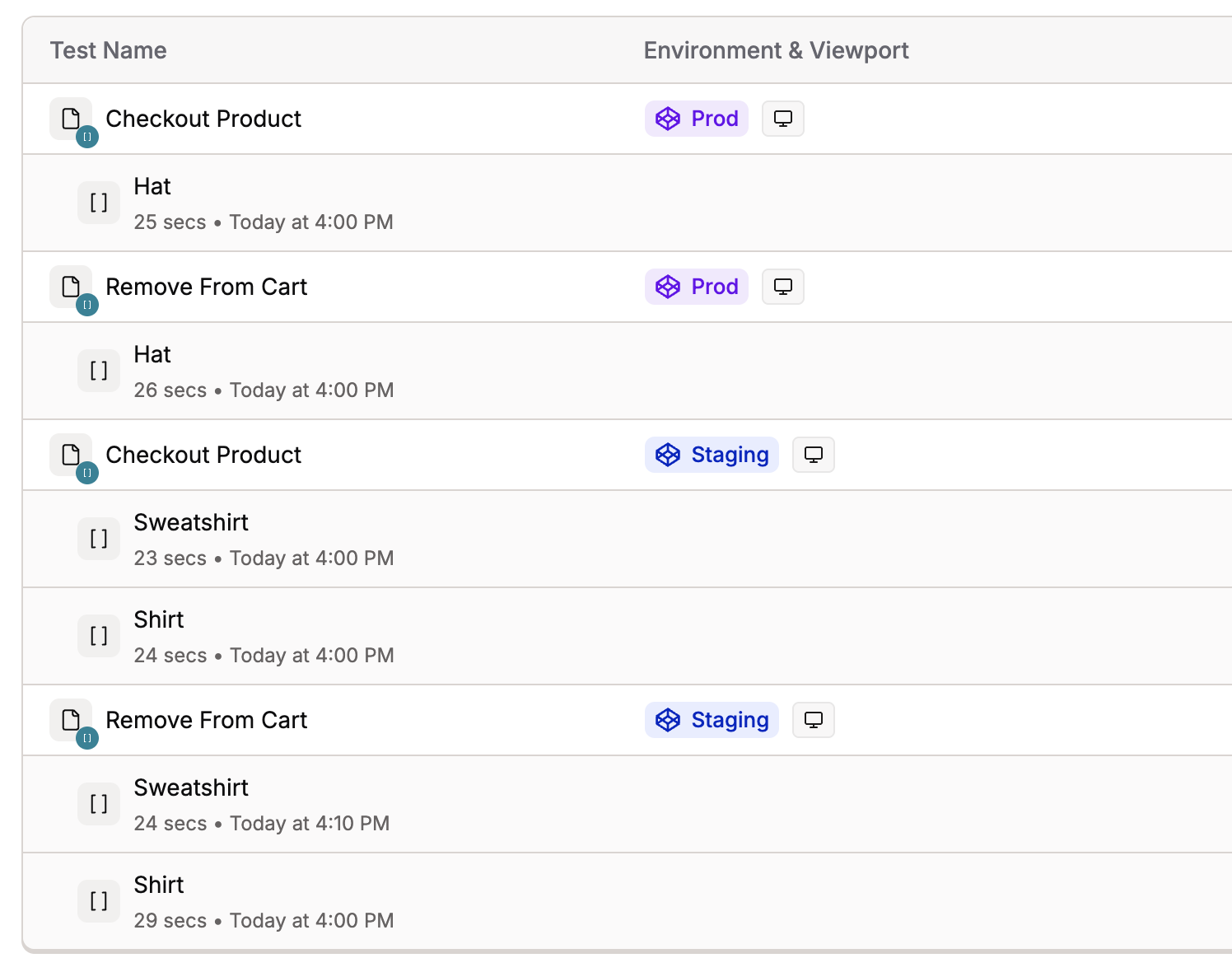What are Environments?
An environment represents a specific deployment of your application where tests can be executed. Common examples include:- Development - Your local or dev server
- Staging - Pre-production environment for final testing
- Production - Live production environment
- Feature Branches - Temporary environments for new features
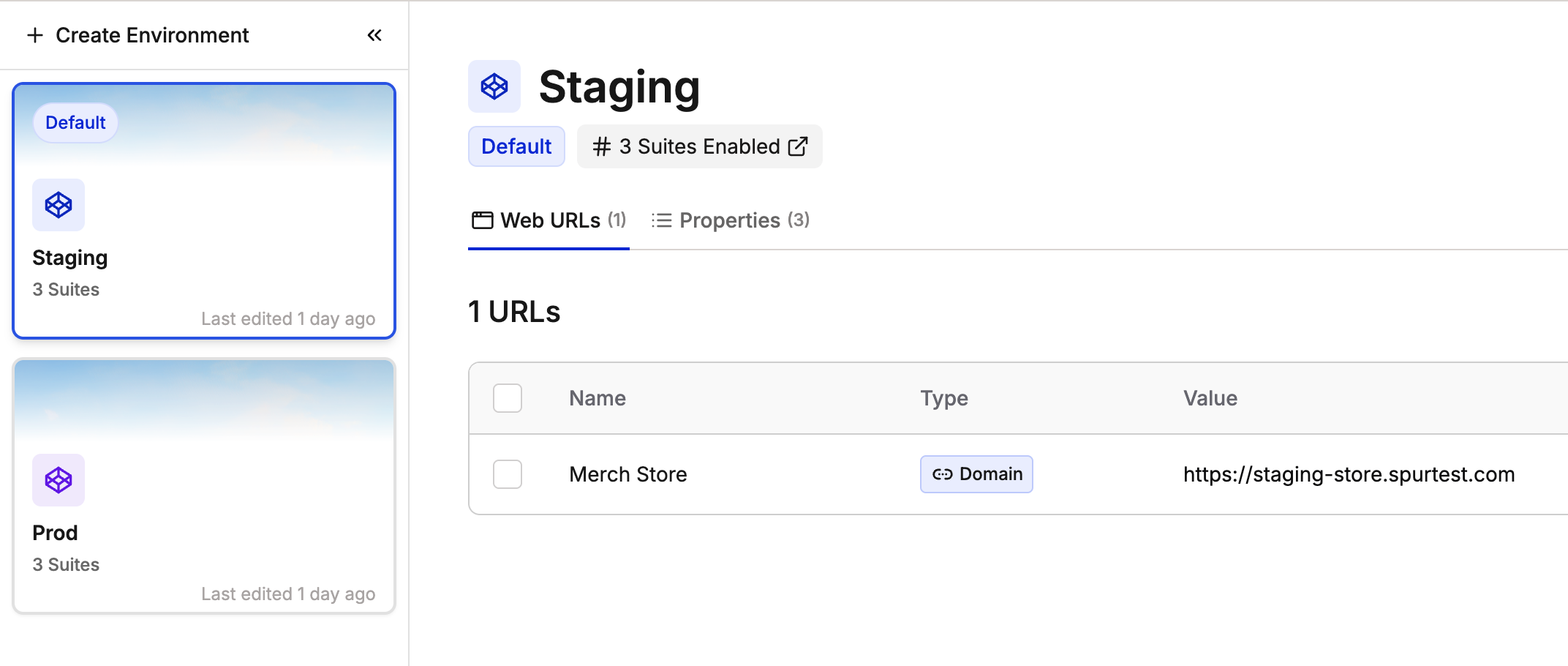
Environments dashboard showing multiple configured environments
Key Benefits
No Test Duplication
Write tests once, run them across all environments without copying test code
Environment-Specific Config
Each environment has its own URLs, credentials, and variables
Parallel Testing
Run the same test across multiple environments simultaneously
Easy Comparison
Compare test results across environments to spot inconsistencies
What Each Environment Can Have
Environment VariablesHow Environments Work
1
Configure Environments
Set up your environments (Dev, Staging, Production) with their specific configurations.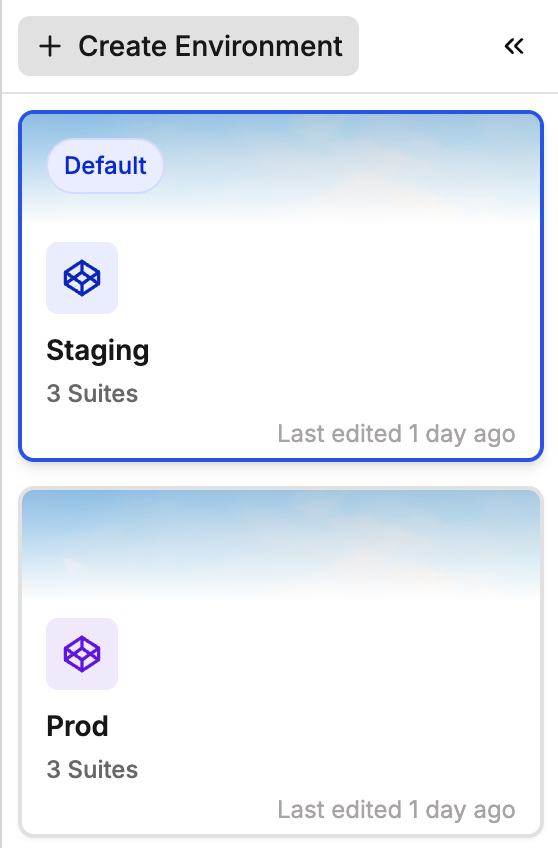

2
Create Tests
Write tests that use environment variables instead of hardcoded values.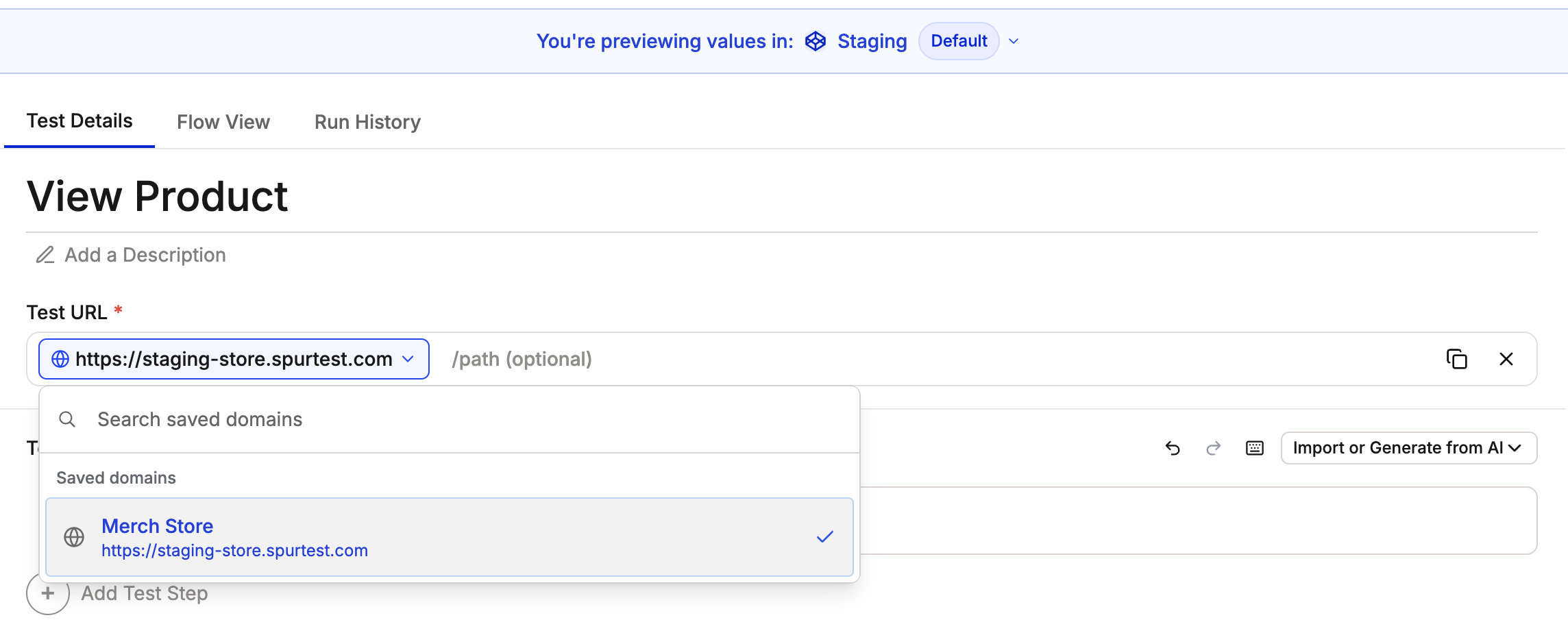

3
Run Tests
When running a test, select which environment(s) to test.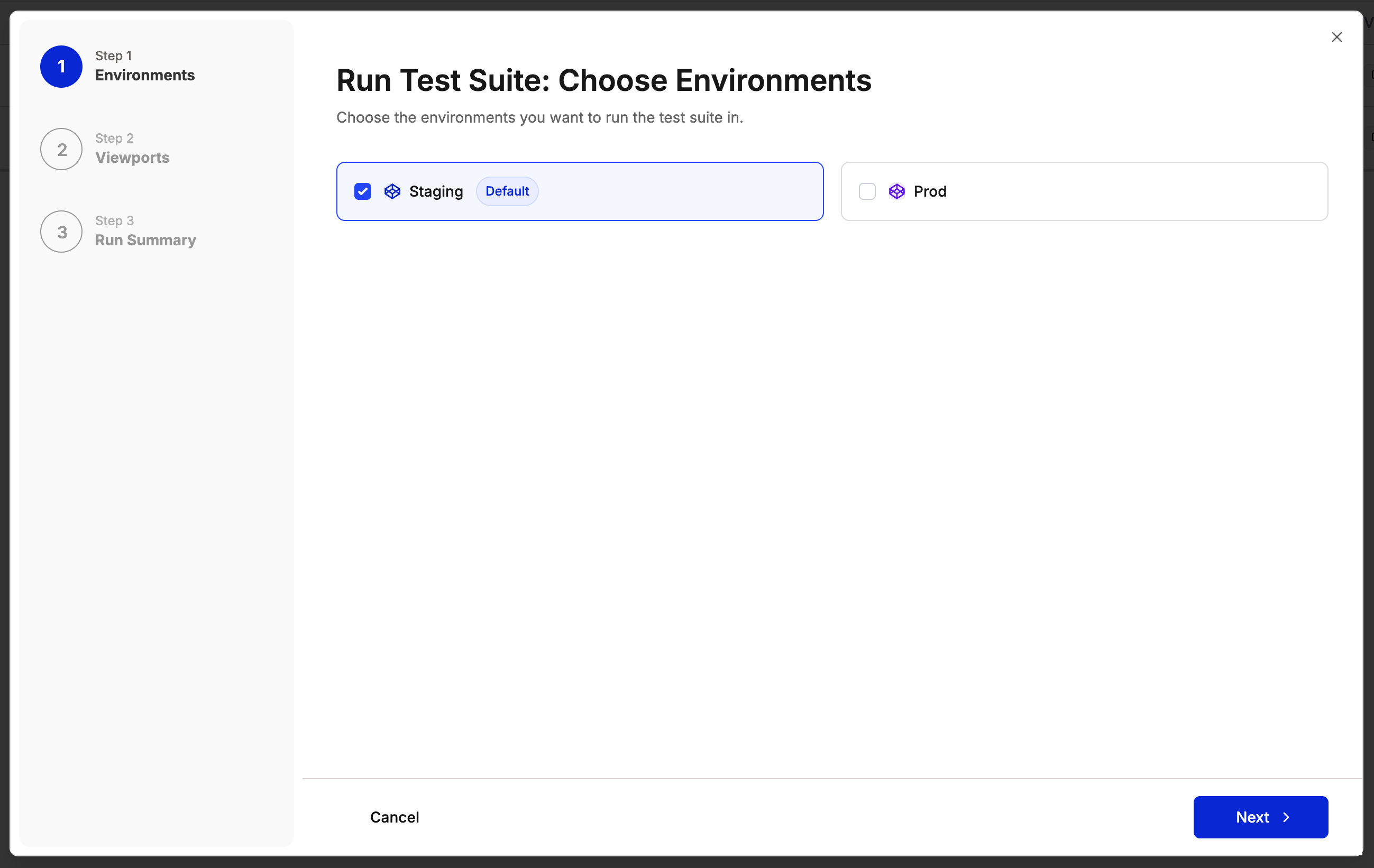

4
View Results
See separate results for each environment and compare them side-by-side.